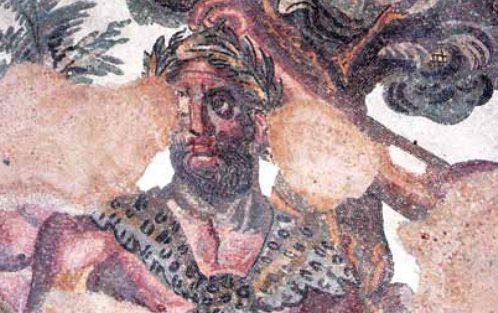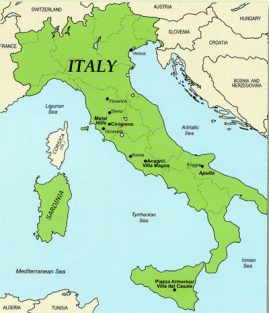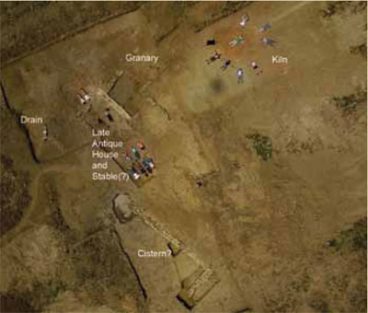Volume 53 / Number 2
2011
Special Edition: Italy
On The Cover: The "Bikini Girls" mosaic, thought to represent an athletic competition, dates to the 4th century AD. Two of the ten athletes are portrayed here: a young woman with hand weights and another woman about to throw a discus. The complete mosaic from Piazza Armerina is in The Villa del Casale of Piazza Armerina."

Vol. 53 / No. 2
By: Alessandro Pezzati
Looking Back – Minturnae
The city of Minturnae, 50 miles from Naples, was built by the Romans in 295 BC as a fortified commercial […]
View ArticleVol. 53 / No. 2
By: Giovanna Bianchi
The Silver Rush in Tuscany’s Wild West: Medieval Archaeology in the Metal Hills
Tuscany is not only a land of gentle hills and Chianti-bearing vineyards. In the southwest is an area little known […]
View ArticleVol. 53 / No. 2
By: Giovanna Bianchi
The Hungry Archaeologist – Metal Hills
Throughout the Metal Hills, it is easy to find a restaurant where one can enjoy food that is both delicious […]
View Article
Vol. 53 / No. 2
By: Patrizio Pensabene and Enrico Gallocchio
The Villa del Casale of Piazza Armerina
The Villa del Casale, near Piazza Armerina in south-central Sicily, is arguably one of the best-preserved and best-known Roman villas, […]
View Article
Vol. 53 / No. 2
By: Giuliano Volpe
Rediscovering the Heel: Archaeology and History in Northern Apulia
Daunia, the ancient territory that occupied the modern province of Foggia in northen Puglia, is extraordinarily rich in cultural heritage. […]
View ArticleVol. 53 / No. 2
By: Giuliano Volpe
The Hungry Archaeologist – Daunia
Daunia’s cuisine is like its archaeology, close to the land, and many dishes are based on peasant food that varies […]
View ArticleVol. 53 / No. 2
By: Patrizio Pensabene and Enrico Gallocchio
The Hungry Archaeologist – Piazza Armerina
In Piazza Armerina, one should not miss the many pastry shops, where Sicilian specialties such as cannoli and cassate are […]
View Article
Vol. 53 / No. 2
By: Richard Hodges
Penn Museum and Italy: From the Director
The archaeology of Italy, the bel paese or beautiful country, has long held a deep attraction for archaeologists and members […]
View Article
Vol. 53 / No. 2
By: Kim Bowes
Reimagining Ancient Italy: New Directions in Italian Archaeology: From the Guest Editor
In the modern imagination, Italy is a land of rolling vineyards, dramatic coastal vistas, and of course, extraordinary food— infinite […]
View Article
Vol. 53 / No. 2
Museum Mosaic – Summer 2011: People, Places, Projects
Landmark Symposium Held at the Penn Museum On March 19, 2011, the Penn Museum held a public symposium, Reconfiguring the […]
View Article
Vol. 53 / No. 2
The Hungry Archaeologist – Anagni
Anagni’s food traditions are those of the Ciociaria region, the market gardens for Rome. The most famous local dish is […]
View Article
Vol. 53 / No. 2
By: Kim Bowes, Mariaelena Ghisleni, Cam Grey and Emanuele Vaccaro
Excavating the Roman Peasant
We view the Roman world through the eyes of the wealthy—the lettered elite who penned ancient history and literature, and […]
View Article
Vol. 53 / No. 2
By: Elizabeth Fentress, Caroline Goodson and Marco Maiuro
Wine, Slaves, and the Emperor at Villa Magna
Writing to his tutor Fronto in about AD 141, the future emperor Marcus Aurelius describes his stay at the imperial […]
View Article